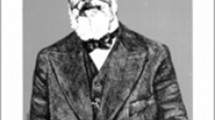Abstract
A follower of Francis Bacon, Robert Boyle in his empirical approach was largely responsible for the transformation of Dutch Cartesian rationalism into the experimental philosophy of the late seventeenth century. The next transformation was into Newtonian physics. Isaac Newton’s Principia (1687) and the Opticks (1704) were studied in the Dutch Republic as soon as they became available by such influential natural philosophers as Christiaan Huygens, Buchardus de Voider and Bernard Nieuwentyt, but the first comprehensive textbook based on the Newtonian methodology was Willem Jacob’s Gravesande’s Physices elementa mathematica, experimentis confirmata. Sive Introductio ad Philosohiam Newtoniam (1720–1). He wrote that he was proud to follow in the footsteps of his master. This is not the place to delve into the complexities of the philosophical and scientific background of Newton’s two seminal works, apart from the broad generalization that they united two approaches to the study of natural mathematical analysis (abstraction) and experimentation.1
Access this chapter
Tax calculation will be finalised at checkout
Purchases are for personal use only
Preview
Unable to display preview. Download preview PDF.
Similar content being viewed by others
Notes
See the few selected references in this paper for the primary (and other secondary) sources. I.B. Cohen, The Newtonian Revolution. Canmbridge University Press, 1980.
W.D. Hackmann, ‘Instrumentation in Theory and Practice of Science: Scientific Instruments as Evidence and as an Aid to Discovery,’ Annali dell’Istituto e Museo di Storia della Scienza di Firenze, 10 (1985), pp. 110–112;
C. de Pater, Petrus van Musschenbroek (1692–1761) een Newtoniaans Natuuronderzoeker. Utrecht: printed doctoral thesis, 1979, pp. 57–121.
R.W. Home, ‘Newton on Electricity and the Aether,’ in Z. Bechler, ed., Contemporary Newtonian Research. Dordrecht and Boston: Reidel Publishing Company, 1982, pp. 191–213.
W.J.’s Gravesande, Mathematical Elements of Natural Philosophy, Confirmed by Experiments; or an Introduction to Sir Isaac Newton’s Philosophy. London, 1721, vol. 2, p. 7.
W.D. Hackmann, Electricity from Glass, the Development of the Frictional Electrical Machine 1600–1850. Alphen aan den Rijn: Sijthoff & Noordhoff, 1978, pp. 90–103.
W.D. Hackmann, John and Jonathan Cutbhertson. The Invention and Development of the Eighteenth-Century Plate Electrical Machine. Leiden: Communication no. 142 of the Rijksmuseum voor de Geschiedenis der Natuurwetenschappen, 1973.
W.D. Hackmann, ‘Electrical Researches,’ in R.J. Forbes, ed., Martinus van Marum. Life and Work. Haarlem: Tjeenk Willink & Zoon for the Hollandsche Maatschappij der Wetenschappen, 1971, vol. 3, pp. 329–378.
J. Cuthbertson, Practical Electricity and Galvanism containing a Series of Experiments calculated for the Use of those who are desirous of becoming acquainted with that branch of Science. London, 1807, p. 1.
H.A.M. Snelders, Het Gezelschap der Hollandsche Scheikundigen, Amsterdam: Rodopi, 1980
see also H.A.M. Snelders, ‘The Amsterdam Experiment on the Analysis and Synthesis of Water (1789),’ Ambix, 26 (1979), pp. 116–133
T.H. Levere, ‘Martinus van Marum and the Introduction of Lavoisier’s Chemistry into the Netherlands,’ in R.J. Forbed, ed., Martinus van Marum. Life and Work. Haarlem:Tjeenk Willink & Zoon for the Hollandsche Maatschappij der Wetenschappen, 1969, vol 1, pp. 158–286.
J.L. Heilbron, Electricity in the 17th & 18th Centuries. A Study of Early Modern Physics. Berkeley, Los Angeles and London: University of California Press, 1979, pp. 324–446
R.W. Home (introductory monograph) and P.J. Connor (translation), Aepinus’s Essay on the Theory of Electricity and Magnetism. Princeton University Press, 1978.
R.W. Home, ‘Franklin’s Electrical Atmospheres,’ British Journal for the History of Science, 6 (1972), pp. 131–151;
see also R.W. Home, The Effluvial Theory of Electricity. New York: Arno Press, 1981.
W.D. Hackmann, ‘The Researches of Martinus van Marum (1750–1837) on the Influence of Electricity on Animals and Plants,’ Medical History 16 (1971), pp. 11–26;
see also W.D. Hackmann, ‘The Relationship between Concept and Instrument Design in Eighteenth-Century Experimental Science,’ Annals of Science 36 (1979), pp. 205–224; and (in press) ‘Scientific Instruments: Models of Brass and Tangible Signposts to the Art of the Possible,’ in D. Gooding, S. Schaffer and T. Pinch, Cambridge University Press; Heilbron (see footnote 1), pp. 449–489.
Author information
Authors and Affiliations
Editor information
Editors and Affiliations
Rights and permissions
Copyright information
© 1988 Kluwer Academic Publishers
About this chapter
Cite this chapter
Hackmann, W.D. (1988). Electricity in Eighteenth-Century Holland: A Newtonian Legacy. In: Scheurer, P.B., Debrock, G. (eds) Newton’s Scientific and Philosophical Legacy. Archives Internationales D’Histoire des Idées / International Archives of the History of Ideas, vol 123. Springer, Dordrecht. https://doi.org/10.1007/978-94-009-2809-1_10
Download citation
DOI: https://doi.org/10.1007/978-94-009-2809-1_10
Publisher Name: Springer, Dordrecht
Print ISBN: 978-94-010-7764-4
Online ISBN: 978-94-009-2809-1
eBook Packages: Springer Book Archive




